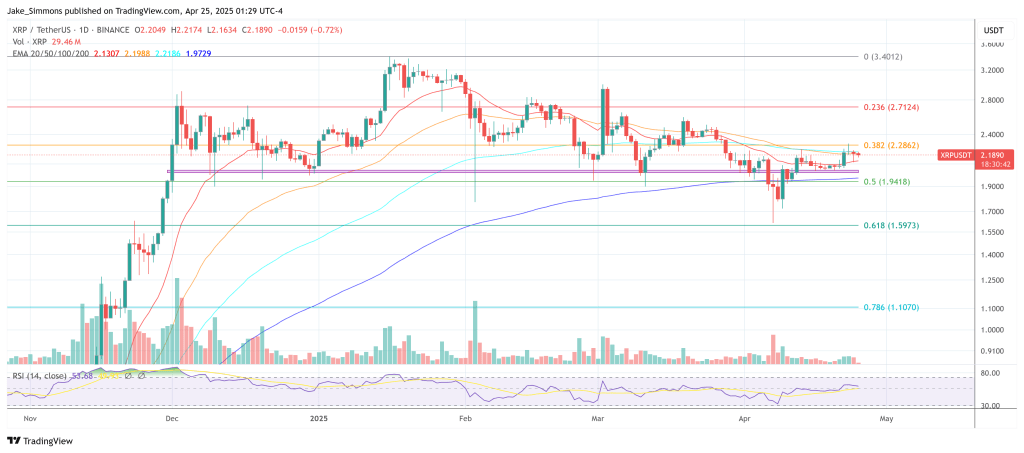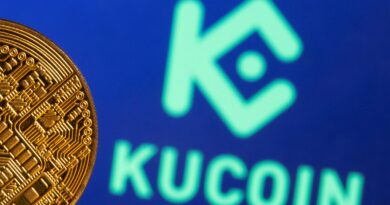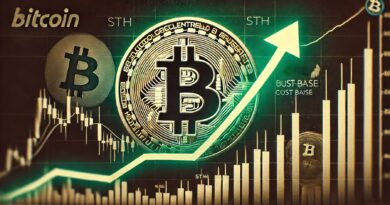Ripple President Unveils Plans Around IPO, RLUSD, RWAs

In a conversation with CNBC’s Arjun Kharpal, Ripple President Monica Long sketched out the company’s post-litigation agenda, detailing how a prospective US initial public offering (IPO), the US-dollar stablecoin RLUSD, and an aggressive push into real-world-asset tokenization are reshaping Ripple’s roadmap.
Ripple IPO: On the Table, But Not Urgent
Long, who joined Ripple 12 years ago after working with co-founder Chris Larsen at peer-to-peer lender Prosper, opened by recalling that banks “slam[med] the door in our face” when Ripple first pitched blockchain-based cross-border settlement in 2014. A decade later, she said, “banks understand that this is going to be the future of finance and so they have embraced it a lot more,” framing that shift as the backdrop for Ripple’s current expansion into custody, stablecoins, and tokenization services.
Although CEO Brad Garlinghouse has previously linked an IPO to the end of Ripple’s legal dispute with the US Securities and Exchange Commission, Long signaled no immediate rush to list. “At this moment, we have a lot of liquidity… billions of dollars cash on the balance sheet,” she told Kharpal.
The company is therefore focused on inorganic growth—“We’re in an acquisitive position,” she added—rather than raising fresh capital in public markets. Still, Long acknowledged that improved US policy signals have reopened domestic opportunities that were effectively sealed off during the SEC lawsuit.
Since Judge Analisa Torres ruled in July 2023 that “XRP in and of itself is not a security,” Ripple has resumed US hiring and deeper engagement with American banks. “To modernize infrastructure for financial institutions, it’s not realistic that the the existing systems like banks are going to plug directly into the blockchain. They do need some connective tissue that’s what we provide,” Long added.
Focus On RLUSD
Ripple’s entry into the stable-value arena comes via Ripple USD (RLUSD), now hovering near a $300 million market capitalization. Long said the decision to launch arose from live payment corridors in Latin America-Asia trade lanes where counterparties “would much rather deal in dollars than their local currency which is very volatile.” She positioned RLUSD as a 24/7 liquidity rail for corporates that are constrained by “bank cut-off times, nights and weekends” in today’s correspondent-banking stack.
While acknowledging that the stablecoin market’s explosive growth has been driven by crypto trading, she stressed that Ripple’s “bet is really on the institutional side,” naming cross-border payments and collateral management as core RLUSD use cases.
The strategy received an immediate leg-up through Ripple’s $1.25 billion agreement to acquire prime broker Hidden Road, which already clears roughly $3 trillion in annual volume. Hidden Road’s clientele, Long noted, are demanding on-chain dollars as margin for traditional assets—an application that could accelerate RLUSD circulation without competing head-to-head with retail-oriented giants.
Tokenization And Regulatory Backdrop
Long also reaffirmed the company’s conviction that blockchain would evolve into a “modern financial rail,” with tokenized capital-markets instruments as the next frontier. Ripple is supplying custody and issuance software to banks such as SG Forge, allowing them to mint and manage digital representations of stocks, bonds and other securities while retaining control of product design.
The emphasis, she said, is on “sewing together the infrastructure between the legacy systems and on-chain,” a theme echoed in forthcoming XRP Ledger amendments for multi-purpose tokens and native lending protocols.
Despite Ripple’s predominantly institutional focus, Long did not rule out future retail touchpoints. She quipped that she still holds “a fraction of a Banksy from the height of the NFT days,” underscoring personal enthusiasm for fractional ownership models even as the firm concentrates on back-end plumbing.
The Ripple president depicted an improving US climate, praising the rollback of SAB 121 and the thaw in SEC enforcement tactics. She also pointed to bipartisan momentum for a stablecoin bill and to Washington’s proposed “crypto strategic reserve,” which expressly cited XRP among assets under consideration. “More than anything,” she observed, “it validates the legitimacy of the asset.”
Summing up Ripple’s long-view ethos, Long emphasized durability over hype cycles: “If we build things that solve problems and there’s real utility behind it, then everything else sorts itself out.” In 2025, that utility narrative revolves around RLUSD’s institutional rails, large-scale tokenization pilots and the prospect—once unthinkable—of US banks holding XRP-Ledger assets on their balance sheets.
At press time, XRP traded at $

Featured image from YouTube, chart from TradingView.com

Editorial Process for bitcoinist is centered on delivering thoroughly researched, accurate, and unbiased content. We uphold strict sourcing standards, and each page undergoes diligent review by our team of top technology experts and seasoned editors. This process ensures the integrity, relevance, and value of our content for our readers.









